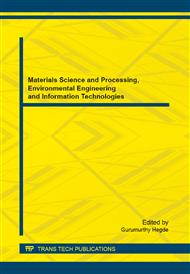p.426
p.430
p.436
p.440
p.444
p.448
p.451
p.455
p.459
Improvement Measures of ORP in Subsurface Wastewater Infiltration System
Abstract:
Oxidation Reduction Potential (ORP) is one of the most important factors that not only influences the operation of subsurface wastewater infiltration system (SWIS), but also has a crucially effect on treatment efficiency and the environment of microbial. Therefore, this paper briefly analyzes the effects of ORP measures which are commonly used to improve ORP, such as flooding and drying alternate, constituting matrix, diffluent ratio, oxygen recovery by inflow pipes and roots of plants and soil animal activity , are summarized. Example analysis shows that all measures mentioned are practicable. With the deepening study of the technology, more attention will be paid on combining a series of different methods and applying new matrix materials for developing SWIS theory and research. The operation mode will be more flexible.
Info:
Periodical:
Pages:
444-447
Citation:
Online since:
October 2014
Authors:
Price:
Сopyright:
© 2014 Trans Tech Publications Ltd. All Rights Reserved
Share:
Citation:


